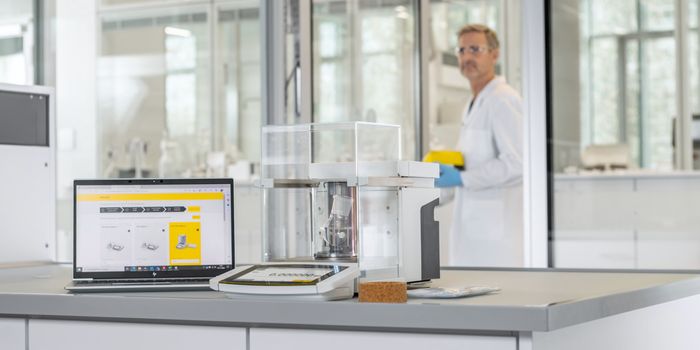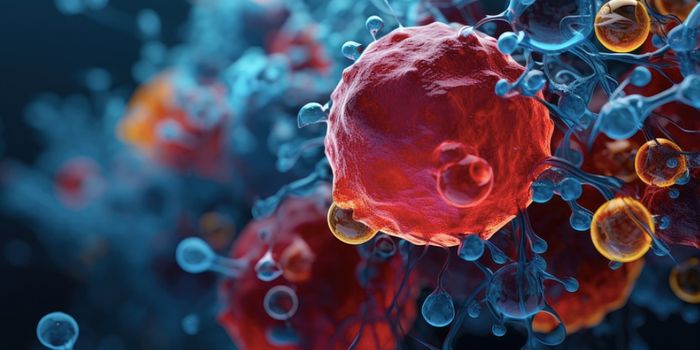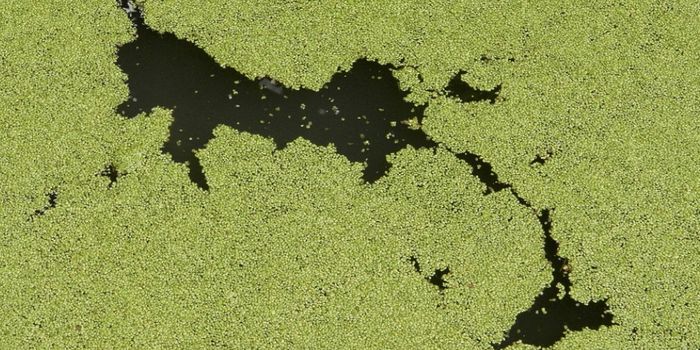Revealing the Structure of Bacterial Machines
Nanomachines have not yet reached a stage where they are applied in a clinical setting, but that is one of the many goals in the field of nanotechnology. Developers can often look to nature for inspiration, since there are so many natural micro machines already in use in a variety of biological settings. One example are the carboxysomes of cyanobacteria, natural protein micromachines that utilize photosynthesis. New work, reported in the journal Nanoscale by researchers at the the University of Liverpool, has described the structural and physical characteristics of these machines.
Cyanobacteria are a specialized kind of bacteria that use photosynthesis to produce energy and oxygen, like green plants do. These ubiquitous microbes are the most abundant organism in both fresh water and in oceans. Within cyanobacteria are carboxysomes, working to convert carbon dioxide into sugar. Their numbers create an impact on global biomass and the environment, and you can learn more about that in the above video.
Carboxysomes, which are polyhedral structures on a nanoscale and are comprised of a few different kinds of enzymes and proteins. There is not much known regarding how the carboxysomes are created or maintained, which is crucial to continued carbon fixation.
Royal Society University Research Fellow Dr. Luning Liu of the Royal Society worked with scientists at the Institute of Integrative Biology at the University to learn more about the native structure and probe the mechanical stiffness of carboxysomes utilizing advanced microscopes and biochemical methods.
The scientists were the first to extract purified active carboxysomes from cyanobacteria and were thus able to determine their protein composition and their carbon fixation activity. Using electron microscopy and atomic force microscopy, the investigators then got a look at how the proteins were organized in the structure, and could describe the morphology of these bacterial machines.
It turns out that carboxysomes are much more flexible structurally and more pliable than thought. Although they are similar to polyhedral biruses, they turned out to be a lot softer. That connects to their formation process and regulation in bacteria. This was the first time the mechanical nature of these three-dimensional nano machines have been described.
"It's exciting that we can make the first 'contact' with these nano-structures and understand how they are self-organized and shaped using state-of-the-art techniques available at the University. Our findings provide new clues about the relationship between the structure and functionality of native carboxysomes,” commented Dr. Liu.
Different features of carboxysomes are notable, like self-assembly and modularity. That may make them especially interesting to people trying to design new nanomachines, like nanoscientists, synthetic bioengineers and biologists.
"We're now just starting to understand how these bacterial machines are built and work in nature. Our long-term vision is to harness the knowledge to make further steps towards better design and engineering of bio-inspired machines,” continued Dr Liu, "The knowledge and techniques can be extended to other biological machines.”
Sources: AAAS/Eurekalert! via University of Liverpool, Nanoscale

-
MAY 07, 2024Is It Anti-RNP or Anti-Sm/RNP?
- See More
-
APR 30, 2024Immuno-Oncology Virtual Event Series 2024
-
MAY 07, 20243rd International Biosecurity Virtual Symposium
-
MAY 23, 2024For the Love of Digital PCR 2024
- See More


















































